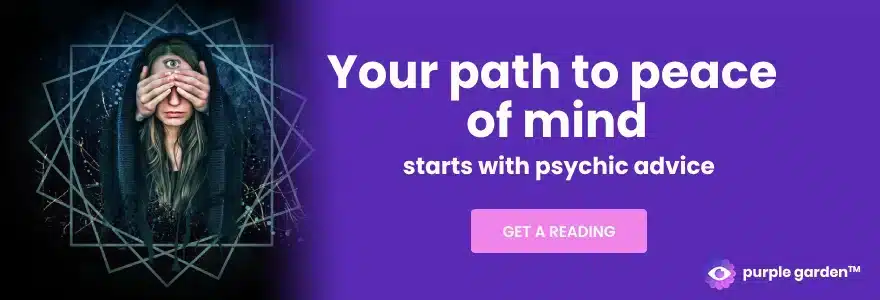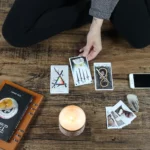Table of Contents
Key Takeaways
- The moon’s rhythm mirrors your own cycles of emotional reflection and renewal
- Each phase offers space to set intentions, process feelings, or let go
- You don’t need to follow a belief system to benefit from moon practices, just presence
- Science shows the moon may subtly influence sleep and mood
- Simple, grounded rituals can support emotional healing over time
Maybe you have felt it yourself. A full moon that keeps you awake or stirs up strong feelings. A new moon that brings a quiet desire to reset. Even if science has not reached a clear conclusion, many people find the moon’s rhythm soothing, even healing.
The moon offers more than just beauty in the sky. It gives you a natural rhythm to check in with yourself. By noticing how you feel throughout each phase, you create space for emotional clarity and growth. You do not need to be spiritual or mystical to benefit. Just curious and willing to slow down.
This practice is not about doing things perfectly. It is about moving with your emotional cycles instead of resisting them.
Understanding Lunar Phases and Emotional Patterns
The moon completes a full cycle roughly every 29 days. It moves through eight phases, but you only need to focus on four to begin using it as a guide for emotional awareness.
New Moon: When the sky is dark, it is a time of stillness and new beginnings. This is a good moment to reflect, set intentions, or journal about what you want to invite into your life.
Waxing Moon: As the moon grows, your energy often builds too. This is a time for taking small actions, making progress on goals, or exploring your emotions more openly. You may feel ready to face something that once felt too heavy.
Full Moon: Emotions often feel heightened during this phase. Rather than seeing this as chaos, treat it as a time of clarity. The full moon reveals what you have been avoiding and gives you the energy to release it.
Waning Moon: As the light fades, you are invited to slow down and let go. This is a natural time for forgiveness, reflection, and clearing space, both internally and externally.
By noticing how your mood shifts with each phase, you begin to understand your emotional patterns more deeply. This awareness creates space for healing and self-trust.
The Science Behind Lunar Influence on Emotions
Scientific research into the moon’s impact on human behavior shows mixed results, but there are interesting patterns. Some studies have linked the full moon to disrupted sleep, which can affect emotional regulation. Other reports suggest increased emotional activity during certain phases, although findings are not consistent.
Whether or not the moon directly influences your brain chemistry, paying attention to its cycle can still offer value. It gives you a regular check-in point to slow down, reflect, and reset emotionally.
The Power of Ritual and Routine
You do not need to prove whether the moon affects your emotions to benefit from following its rhythm. What matters is how it helps you show up for yourself. When you check in regularly, even once per lunar cycle, you create a ritual of emotional awareness.
These check-ins help you pause before emotions build up or spill over. They become a rhythm of care in a world that often pushes you to keep going without reflection. Whether you journal during the new moon, take a mindful walk under the full moon, or simply notice your mood, the consistency builds something meaningful over time.
There is comfort in knowing the moon will rise, shift, and return. You are part of that cycle too. And tapping into it can remind you that change is natural, and growth is always possible.
Practical Moon-Based Emotional Practices
You do not need crystals or astrology knowledge to begin. Just a little intention and time to check in. Here are some simple practices you can try with each main moon phase:
New Moon
- Write down three emotions you want to explore this month
- Set one gentle intention related to emotional growth
- Sit in stillness for ten minutes and focus on your breath
- Create a calm space where you feel safe to reflect
Full Moon
- Journal about what emotions have been strongest lately
- Talk openly with someone you trust about what is surfacing
- Move your body through dance, walking, or cleaning to release tension
- Practice gratitude, even for difficult emotions that taught you something
Waning Moon
- Write a letter of forgiveness to yourself or someone else, whether or not you send it
- Let go of physical items that hold unwanted emotional weight
- Say no to commitments that leave you feeling drained
- Reflect on any habits or thought patterns that are ready to shift
Consistency is more important than perfection. Even one practice per cycle can create emotional clarity and momentum.
Building Your Personal Moon Practice
To start your own practice, begin by simply observing. For one full moon cycle, take a few notes each day. How is your mood? Do you feel more open, tired, emotional, or grounded?
Once you notice patterns, you can start planning around them. If you tend to feel energized during the waxing moon, you might schedule therapy sessions or creative projects then. If you feel inward or heavy during the waning phase, consider setting aside time to rest or journal.
This is not about controlling your emotions. It is about understanding them and allowing them to move through you in their own time.
Making It Work for Your Lifestyle
Your moon practice should support your life, not complicate it. It can be as simple as glancing at a moon calendar each week and asking yourself how you feel.
If mornings are your quiet time, do a short check-in with your coffee. If evenings feel more natural, light a candle and reflect before bed. Parents, shift workers, and busy professionals can find moments between tasks to breathe, reset, or jot down a few lines.
This is your practice. Let it adapt to your life and grow with you. There is no need to do it all or do it perfectly. What matters is that it helps you reconnect to yourself.
Common Misconceptions About Moon Work
You do not need to believe in astrology or follow a spiritual path to explore lunar practices. Many people use moon phases as a natural calendar for reflection and find it helpful without attaching any beliefs.
You also do not need anything fancy. A notebook and a moon phase app or printed calendar are enough. What matters most is your intention and your willingness to show up honestly with whatever you are feeling.
This work is not about doing rituals the right way. It is about creating space to meet yourself where you are.
Conclusion
The moon offers a gentle, reliable rhythm that mirrors your emotional life. By tuning into its phases, you can create more space to reflect, reset, and grow. Whether you see the moon as symbolic or scientifically influential, its cycle gives you a steady opportunity to care for your inner world.
You do not need to do anything complicated. A few quiet moments, a bit of writing, or even a breath under the night sky can open the door. Over time, you may find that what began as a small check-in becomes a powerful habit of emotional presence.
Let the moon remind you that all things move in cycles, that no emotion stays forever, and that your healing can be steady, natural, and deeply your own.
FAQs
Do I need to believe in astrology to try moon-based emotional work?
Not at all. You can use the moon’s phases as a simple guide for self-reflection without attaching any spiritual beliefs.
How long does it take to notice changes?
Many people feel more emotionally aware within a single cycle. Stronger shifts often appear over a few months of consistent check-ins.
What if I forget or skip a moon phase?
That is completely normal. You can start fresh with the next one. The cycle will always come back around.
Can moon work help with serious mental health challenges?
Moon practices can support emotional awareness, but they are not a replacement for therapy or professional care. They can work well alongside other tools and treatments.
Is there a wrong way to do this?
There is no wrong way. If your practice helps you feel more connected, clear, or supported, then it is working.











